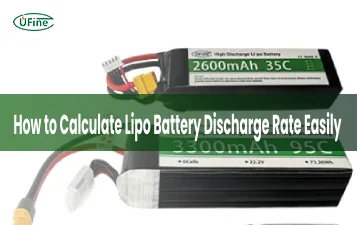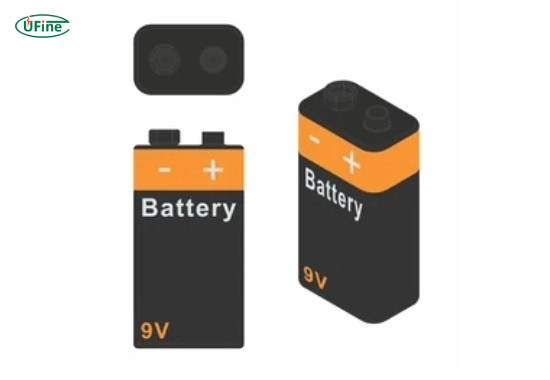Are you trying to maximize the 9-volt battery capacity of your devices? Choosing between lithium and alkaline 9-volt batteries can be tricky. Understanding the differences between these two types is essential for selecting the right one for your needs. This article provides an in-depth comparison, focusing on capacity, to help you make an informed decision.
Part 1. Understanding 9-volt battery capacity
What exactly is 9-volt battery capacity, and why does it matter?
The 9-volt battery, known for its rectangular shape and snap-style connector, delivers a nominal voltage of 9 volts. 9-volt battery capacity refers to the amount of electrical charge a battery can store and deliver, usually measured in milliampere-hours (mAh) or ampere-hours (Ah). Higher capacity means the battery can power a device for a longer time. It is crucial for devices needing a steady power supply, like smoke alarms, carbon monoxide detectors, and wireless microphones.
Common Chemical Types and Capacity
Lithium and alkaline are the two most common chemical types of 9-volt batteries.
- Lithium 9V batteries: Known for their high energy density, lithium batteries offer significantly higher capacity, often around 1200 mAh, leading to longer run times, especially in high-drain devices.
- Alkaline 9V batteries: These batteries, using zinc and manganese dioxide, are more affordable but generally have a lower capacity, typically between 550 mAh and 600 mAh, resulting in a shorter lifespan than lithium batteries.
The structure of a 9V battery typically includes six smaller 1.5V cells connected in series to provide the 9V output.
Artikel Terkait: Understanding 9 Volt Battery Capacity: What Do mAh and Voltage Mean?
Part 2. 9V lithium batteries: Capacity, advantages, and disadvantages
What capacity advantages do lithium 9V batteries offer?
A 9V lithium battery is designed for longevity and consistent power delivery. Its higher capacity suits devices needing steady voltage over time, making it an excellent choice for high-drain electronics.
Capacity and Advantages of Lithium 9V Batteries
- High Capacity: Lithium batteries typically have a capacity of around 1200 mAh, which allows them to last up to 5 times longer than alkaline batteries, making them ideal for devices needing reliable, long-term power, like smoke detectors.
- Long Lifespan: Lithium batteries can last up to 5 times longer than alkaline batteries, making them ideal for devices needing reliable, long-term power, like smoke detectors.
- Lightweight: Lithium batteries are lighter than alkaline batteries, making them suitable for portable electronics like wireless microphones.
- Better Performance in Extreme Temperatures: Lithium batteries function well in extreme cold and heat, ranging from -40°C to 60°C, making them ideal for outdoor use, such as weather sensors.
- Consistent Voltage Output: They provide a steady 9V output throughout most of their life cycle, ensuring consistent power to your device until near depletion.
- High Energy Density: 9V batteries have a high energy density, meaning they can provide plenty of power relative to their size and weight.
Disadvantages of Lithium 9V Batteries
- Higher Cost: Lithium 9V batteries are more expensive. The higher cost may not be justified if you use them to power a low-drain device like a simple radio.
- Not Always Rechargeable: While rechargeable options exist, most lithium 9V batteries are non-rechargeable. Rechargeable lithium options are less common and cost more upfront.
- Overpowered for Some Devices: Lithium batteries’ long lifespan and high capacity may be excessive for devices with low energy needs, such as clocks or remote controls.
Part 3. 9V alkaline batteries: Capacity, advantages, and disadvantages
What capacity limitations do alkaline 9V batteries have?
9V alkaline batteries are a lower-cost solution for powering electronics commonly found in essential household devices. However, their capacity is significantly lower compared to lithium.
Capacity and Advantages of Alkaline 9V Batteries
- Lower Cost: Alkaline batteries are much cheaper than lithium batteries, making them ideal for everyday devices.
- Readily Available: You can find alkaline batteries at almost every retail store.
- Adequate Performance for Low-Drain Devices: Alkaline batteries typically have a capacity between 550 mAh and 600 mAh, which is sufficient for low-drain devices like TV remotes, clocks, or radios, where constant, high-level power isn’t necessary.
Disadvantages of Alkaline 9V Batteries
- Shorter Lifespan: Alkaline batteries have a shorter lifespan than lithium batteries, especially in devices that require a lot of power, such as wireless transmitters or carbon monoxide detectors.
- Heavier Weight: Alkaline batteries tend to be heavier than lithium, which could affect the balance or portability of lightweight electronic devices.
- Less Effective in Extreme Temperatures: Their performance can drop significantly in cold or hot environments, making them less reliable for outdoor gear.
- Voltage Decreases Over Time: As an alkaline battery discharges, its voltage gradually decreases, potentially causing your device to underperform or shut down prematurely.
Part 4. 9V battery capacity: Lithium vs. alkaline
How do lithium and alkaline 9V batteries compare regarding capacity and other factors?
Before diving into the table, it is essential to clarify the core differences. Lithium batteries boast a significantly higher capacity, typically around 1200 mAh, enabling them to power devices longer, especially those with high energy demands. Alkaline batteries, with a 550-600 mAh capacity, are more suitable for low-drain devices where longevity is not a primary concern.
| Feature | Lithium 9V Batteries | Alkaline 9V Batteries |
|---|---|---|
| Capacity | ≈1200 mAh | ≈550-600 mAh |
| Lifespan | Longer, up to 5 times that of alkaline | Shorter |
| Weight | Lighter | Heavier |
| Temperature Performance | Better in extreme temperatures (-40°C to 60°C) | Less effective in extreme temperatures |
| Voltage Output | Consistent 9V output | Voltage decreases over time |
| Cost | Higher | Lower |
| Rechargeable Options | Less common, often non-rechargeable | Typically non-rechargeable |
| Best Use Cases | High-drain devices, critical applications | Low-drain devices, general household use |
Part 5. What about rechargeable lithium 9V batteries and their capacity?
While most 9V lithium batteries are non-rechargeable, rechargeable 9V lithium-ion versions exist. These are designed for users wanting the benefits of lithium with the added convenience of recharging. Keep in mind that rechargeable options may have slightly different capacity ratings. Rechargeable lithium batteries usually double the capacity of NiMH batteries.
Part 6. How does voltage relate to 9V lithium battery capacity?
Rechargeable 9V lithium batteries typically need a charging voltage of around 8.4V to 9V. The voltage is related to the battery’s energy output, but capacity (mAh) determines how long it can sustain that output. Be aware that rechargeable and non-rechargeable batteries may have different full-charge voltages. Using the wrong type of battery can lead to voltage issues affecting device performance.
Part 7. How does 9V battery capacity affect different applications?
9V batteries power smoke detectors, wireless microphones, and medical devices. Devices with speaker drivers, radio antennas, and backlit LCDs need higher-capacity batteries.
Part 8. How can you extend the lifespan and capacity of a 9V battery?
The lifespan of a 9V battery depends on its type and the device it powers. Lithium batteries typically outlast alkaline batteries. For example, alkaline batteries might last 1 to 2 years in smoke detectors, while lithium batteries can last up to 5 years. Consider purchasing batteries in bulk to ensure you always have a fresh supply.
Part 9. How should you use 9V batteries to optimize capacity?
Always double-check the battery label before use to confirm if it is rechargeable and use the appropriate charger. Non-rechargeable batteries should never be recharged, as this can cause dangerous damage.
Part 10. Are there any safety precautions related to 9V battery capacity?
Recharging a non-rechargeable battery can be hazardous and might lead to dangerous leaks or explosions. It’s crucial to use the appropriate battery type for the device and avoid attempting to recharge non-rechargeable batteries.
Part 11. FAQs about 9-volt batteries capacity
What does mAh mean for 9V batteries?
mAh stands for milliampere-hour and measures the battery’s capacity, indicating how much current the battery can supply for a specific time. A higher mAh rating means the battery can deliver more current over an extended period.
Do lithium 9V batteries have higher capacity?
Lithium 9V batteries typically have a higher capacity (around 1200 mAh) than alkaline batteries (around 550-600 mAh), resulting in a longer lifespan.
What factors affect the capacity of a 9V battery?
Factors include the battery’s chemical composition, the device’s power draw, and environmental conditions like temperature.
How does temperature affect 9V battery capacity?
Extreme temperatures can reduce the capacity and performance of both lithium and alkaline 9V batteries. However, lithium batteries generally perform better in a broader range of temperatures.
Is a higher mAh rating always better for 9V batteries?
A higher mAh rating is generally better for devices requiring long-lasting power. However, the extra capacity may not be necessary for low-drain devices, and a lower-capacity, more affordable option like an alkaline battery may suffice.
Related Tags:
More Articles

LiPo Battery Discharge Rate Guide & Calculation Tips
Understand LiPo battery discharge rates, C-ratings, and how to calculate max current. Essential guide for RC, drones, and electronics users.
High‑Capacity 3S LiPo Batteries: 5000 mAh vs. 10000 mAh
Compare 3S LiPo 5000mAh vs 10000mAh batteries by weight, power, and use. Find the best fit for your drone, RC car, or boat setup.
Top 5 Applications for Small 3S LiPo Batteries
Small 3S LiPo batteries power drones, RC gear, wearables, and robotics with high energy and low weight. Making them ideal for compact electronics projects.
Building and Charging Your Own 3S LiPo Pack: A Step‑by‑Step Guide
Learn how to build, balance, and charge a 3S LiPo battery pack safely at home with this complete DIY guide for hobbyists and beginners.
How to Choose the Right LiPo Battery Plug Type?
Discover the best LiPo battery plug types, how to choose them, and expert tips for safe usage, soldering, and maintenance.





